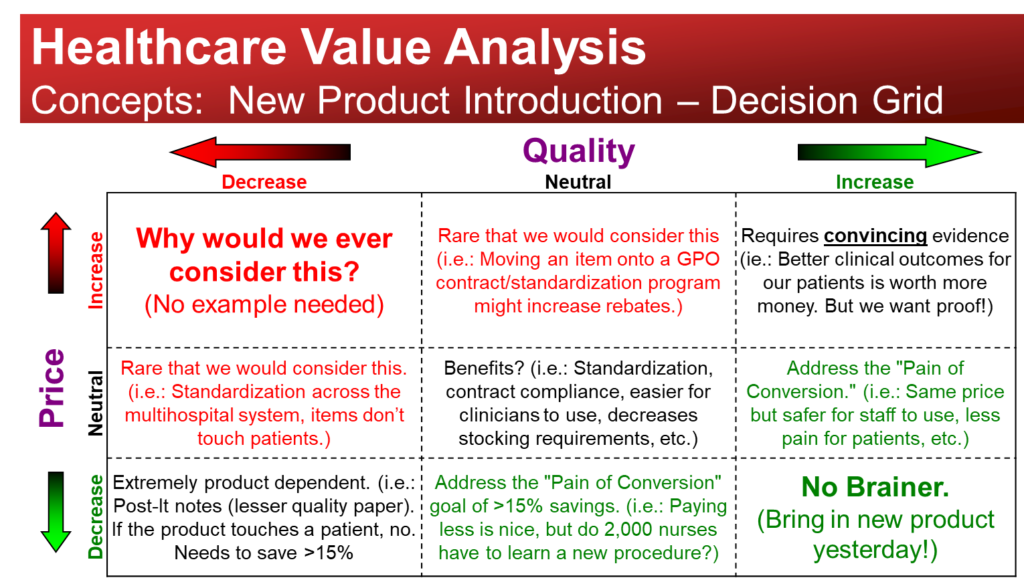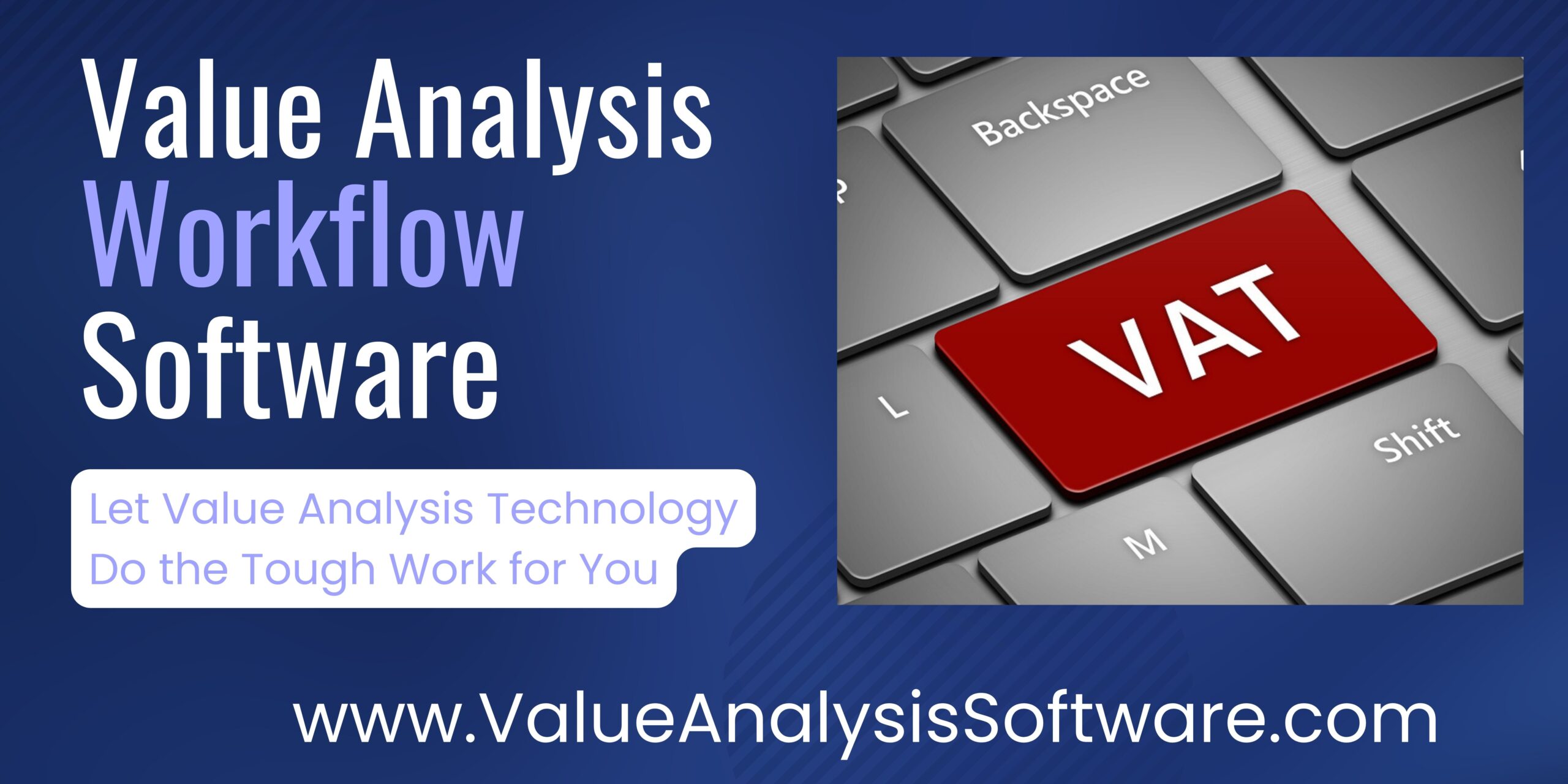 James Russell, RN-BC, MBA, CVAHP, Value Analysis Program Director, UW Health, WI
James Russell, RN-BC, MBA, CVAHP, Value Analysis Program Director, UW Health, WI
As I get more experienced in the field of healthcare value analysis, I get more and more exposed to various tools and techniques intended to assist with the value analysis process. I’m quite certain I’m not the only one who’s noticed that the volume of these tools is steadily increasing. I find it somewhat ironic that software companies are “selling” me on products that will help me reduce my health system’s annual spend on purchased services…for a monthly subscription fee. Isn’t that a little bit like selling me organic, sustainable, free-trade coffee in a little plastic pod that’s not biodegradeable? Okay, that might be a stretch. And actually, these companies serve an important purpose. Who wouldn’t spend a little on a tool that enhances, improves, or even creates from scratch a process that saves many multiples of itself? It just seems like a new one pops up every day.
I have a bit of experience with some of these commercially available tools and some are excellent. It can be incredibly helpful to have a value analysis process standardized and outlined from step 1 to step 12, available for all of my customers to see. I have, and still do, use some of these tools because they simply make my life easier. I, like most of you, can perform a certain number of value analysis projects on my own, with my own “homegrown” templates (mostly in Microsoft Excel®). Let’s just say for kicks, I can handle 6 in-depth projects on my own. I’m defining “in-depth” as a major project that takes between 8 and 12 weeks to complete. With more people in my department (we call them Value Analysis Coordinators here), our impact can spread to more projects, let’s say six more for each Coordinator. Add a dedicated Data Analyst and we can stretch our “bandwidth” even larger. Perhaps two Coordinators, an Analyst, and I could handle 25 projects at once. The right tool can easily double that.
Think about how much time you spend sending, receiving, and replying to project related e-mails with vendor representatives, customers, leadership, GPO representatives, contract experts, etc. The right tool can consolidate all of this minutiae, categorize it, and archive it so all interested folks can reach it easily. It can also automatically “escalate” things that are lagging. How often do you have to “nag” some folks to remind them to do a task? I used to keep a “Nag Log” that I updated once per week, color-coding and putting dates in when I e-mailed or called someone and reminded them that I needed something for a project to move forward. Eventually, after three tries, I start including their boss in the communications. How annoying (for everyone)! The right tool can do this for you. Simply set up parameters on escalation (repeated e-mail every 3 days until the task is marked complete, escalated to their supervisor on the 3rd notice) and that “nag” work gets done for you. Plus, it’s coming from software, not you, so you’re not irritating your customers (much).
The right software can streamline your processes as well. How many of you run monthly or quarterly updates on project data, exporting it to Excel®, and hitting “refresh” on your pivot tables? If you’re as inept as me, you then are manipulating your charts to include the new data so you can send out updated follow-up reports to your project members. I’m not complaining. I actually really enjoy the follow up…showing my colleagues how much their practice changes are really impacting whatever metrics we’ve decided to use to measure the project’s Return on Investment (ROI). It’s one thing to estimate our impact; it’s another to show actual data. The right software can do this for you, without exporting, refreshing, and manipulating! How much time would that save you?
Obviously, I’m not advocating for any particular vendor. That would be inappropriate. It would also be uninformed, since I haven’t tried them all. I have, however, served as an unofficial beta-tester for several different companies’ products and have been delighted when they take my critique to heart and make changes to their product. That’s been a lot of fun.

Let me change to a non-software tool…the value analysis decision grid. Don’t we all have one? Here’s an image of mine. It actually shows better in PowerPoint, where I can make the wording appear as I talk about the particular block in question, but you’ll get the idea. I’m very interested in hearing from you about what you use. Its premise is pretty simple: Every new product request will impact our finances or our quality in one of three ways…positive, negative, or neutral. That gives me nine blocks for every new product to fall into. Some are hardly worth mentioning (decreasing quality and increasing costs…why are we talking about it?). Some are a little harder to assess (increasing quality for higher costs requires quality evidence, not somebody’s opinion). One I made up is the “Pain of Conversion,” and it’s a moving target. Saving 15% of $30,000 isn’t nearly the same as saving 10% of $1 million. But the core of the “Pain,” is simple…I’m not training 2,000 nurses on a new widget to save $10,000 a year. I’d get flogged!
Last point on tools. They can help you formalize things for your customers. I have this mantra that I stole from a colleague (Neil Horton from Sentara):
Healthcare is almost constantly changing. It is rarely the same today as it was just a few short years ago. Resistance to change is somewhat normal. However, at some point, to steal from a beloved old TV series, “Resistance is futile.” Healthcare change is like a train. It’s rolling down the track. You can jump on board and help figure out where it’s heading and what’s needed to manage it. You can stand aside and watch it go by without you, lamenting that “The way we’ve always done it” doesn’t work anymore. Or, you can stand in front and try to stop it (and most likely get run over). Regardless (not irregardless) of what you do…it’s moving on down the line.
The right tools can help you navigate the constantly changing world of healthcare value analysis. They can also help you explain it to your customers and increase your bandwidth. When people I work with say they can’t change, or that learning new things is too hard, I ask them to pull out their smartphones. They (almost) all have one and know how to use it. Ten years ago, not so much. Change happens, whether or not we notice (or like it). Using the right tool can help it be a little less painful. So we can get back to what we really enjoy, changing exam gloves!
| James Russell, RN-BC, MBA, CVAHP, is the Value Analysis Program Director at UW Health (the University of Wisconsin). Jim has 3 decades of nursing experience; a third in critical care, another third in psychiatry, and the last 10 years in healthcare value analysis. He’s been in both staff and leadership positions in the for-profit, community healthcare sector, as well as in several Academic Medical Centers. Jim has published dozens of articles on value analysis and nursing leadership, and speaks regularly at national conferences. You can contact Russell with your questions or comments at [email protected] |





